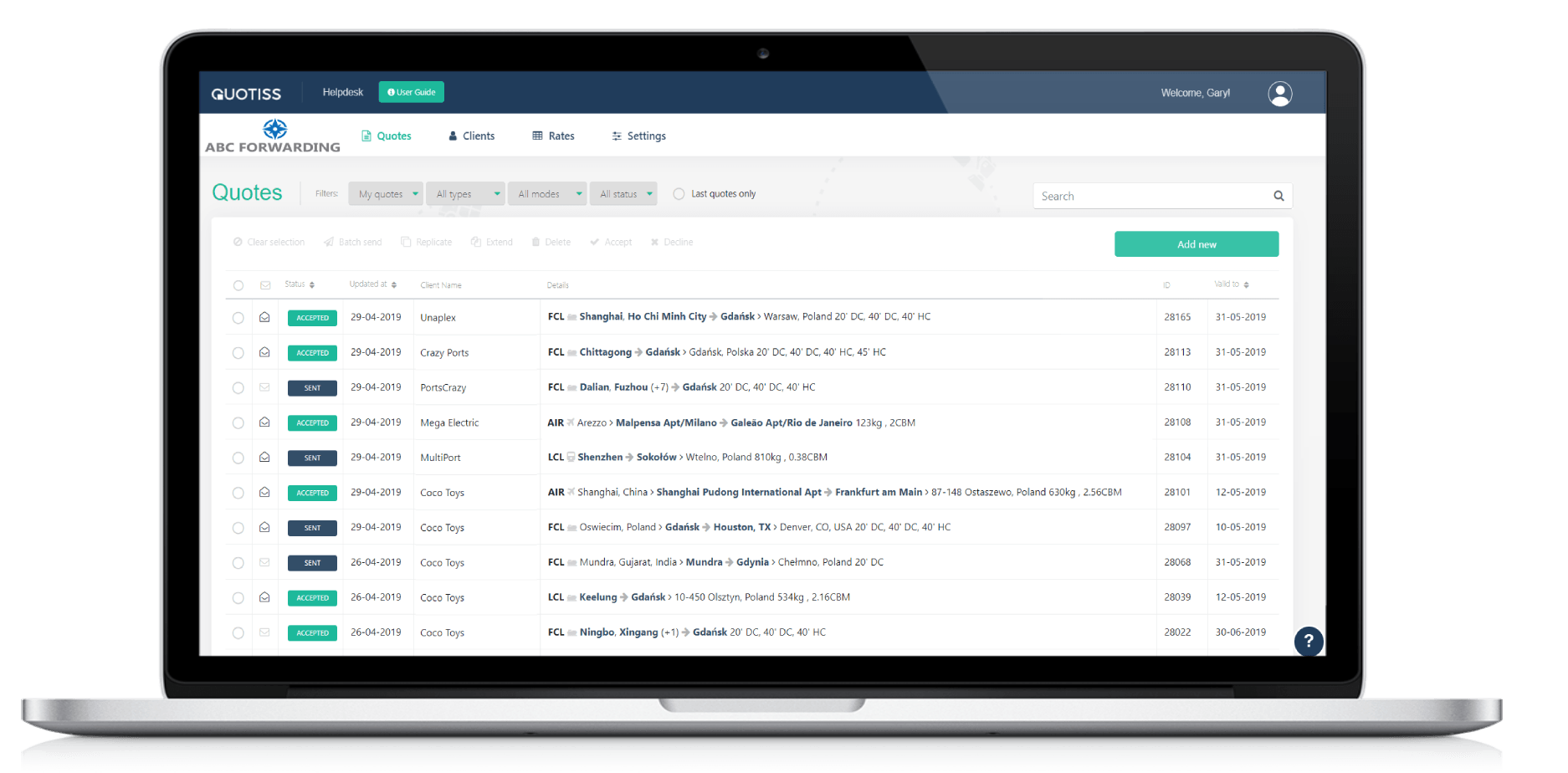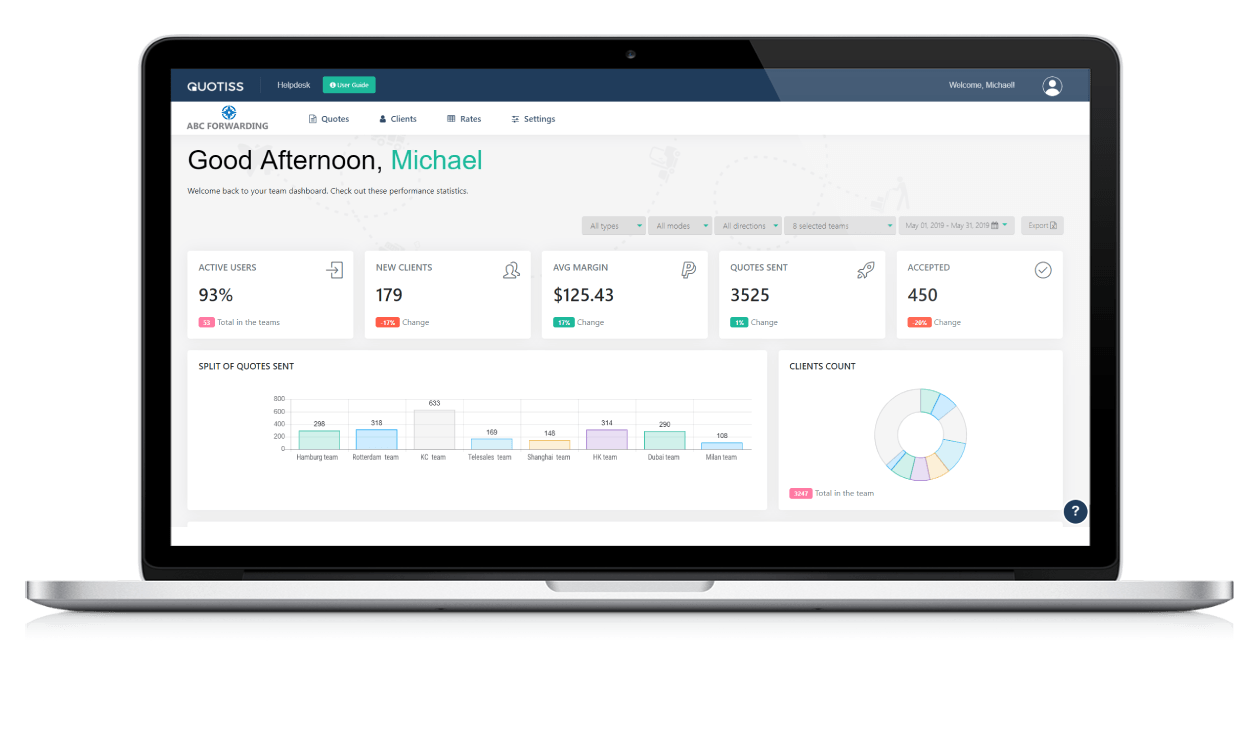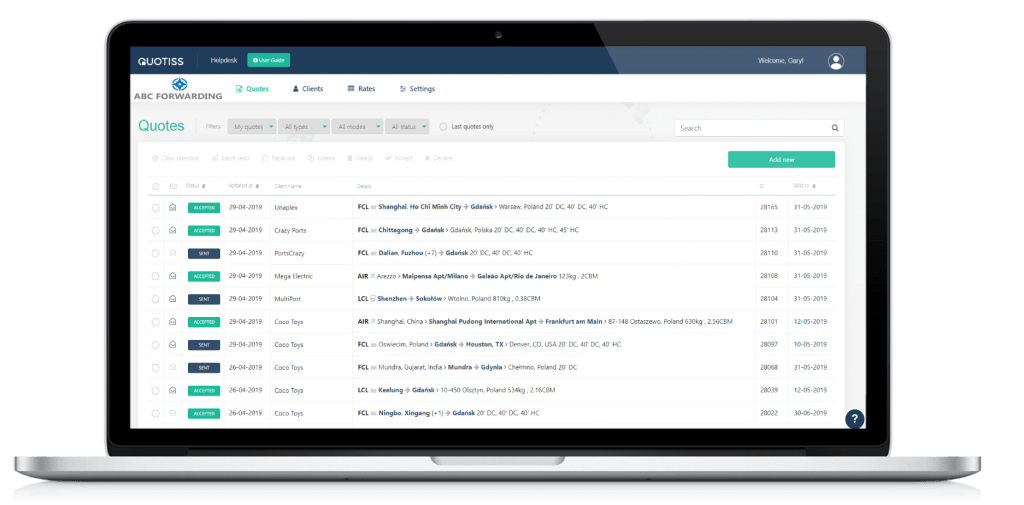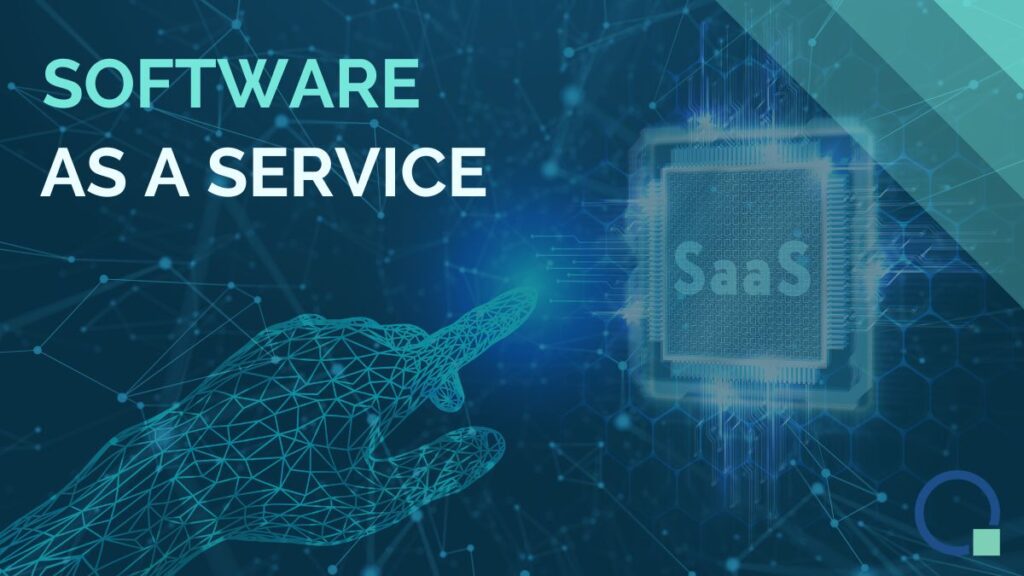What’s in Those Freight Quotes?
In freight forwarding, transparency in the sales activities has never been the case. The complexity and volatility of freight rates significantly limit the visibility into what’s going on in the commercial organization on a daily basis.
Usually, the management team doesn’t know how many freight quotes have been sent today, this week, or this month. And there is no way to check. It is almost impossible to monitor the margins applied to ocean freight and local charges in the quotes. The sales manager must rely on the data that comes from various sources, the information is unstructured and often biased.
This lack of transparency is also an issue for sales reps themselves – they have to search for freight rates in various files and emails, and there is no clear record of what rate has been offered to a client. This is a waste of time and resources, and it often leads to lost business opportunities.
Transparency of Sales is Essential
The importance of having transparency in sales activities is crucial for any business. The key to gaining control of the revenue is to have real-time access to sales performance. The live data stream is invaluable in spotting changes in trends and picking up on issues before they become a problem.
Also, studies show that when employees know their performance and have an instant overview of their KPIs, they improve their work. Focus, motivation, and accountability come when teams can see where everyone stands in just a glance.
Transparency in freight rates can be achieved in the organization when both pricing and quoting are done via the same platform. A platform where all freight rates and quotes are stored, in the most structured and most proper visual way, accessible from anywhere and anytime. Quotiss software provides such a platform for the freight forwarders.
Visual Sales Performance
Quotiss software stores freight ratesheets, local charges, pricing guidelines, customer database, and an archive of freight quotes. Quotiss enables sales teams to generate perfect freight quotes, which can be emailed to customers directly thanks to the full email integration.

Quotiss dashboard is a powerful visualization tool. It provides an analysis of freight rates history per carrier, client acquisition data, freight quotes stats per person or per team, average margin history, etc.
Quotiss dashboard puts your commercial KPIs and critical metrics together into an artfully designed and intuitive display. Data is updated in real-time. It allows setting goals and opens opportunities for immediate feedback and action. Everyone in the company is on the same page when it comes to sales performance and pricing guidelines, enabling better communication and collaboration across the teams.

By switching from Excel to Quotiss software, you can automate the sales activities and get access to the sales performance analysis, in real-time. There will no longer be a need to manage a number of complex freight ratesheets in Excel. Most importantly, your commercial data will stay secure!
Would You Like a Quick Start with Quotiss?
Click here to register your company. We’ll activate your company’s profile and help with the initial settings and user onboarding. You can start uploading your freight ratesheets and quoting freight from Quotiss on the same day we sign the deal.


